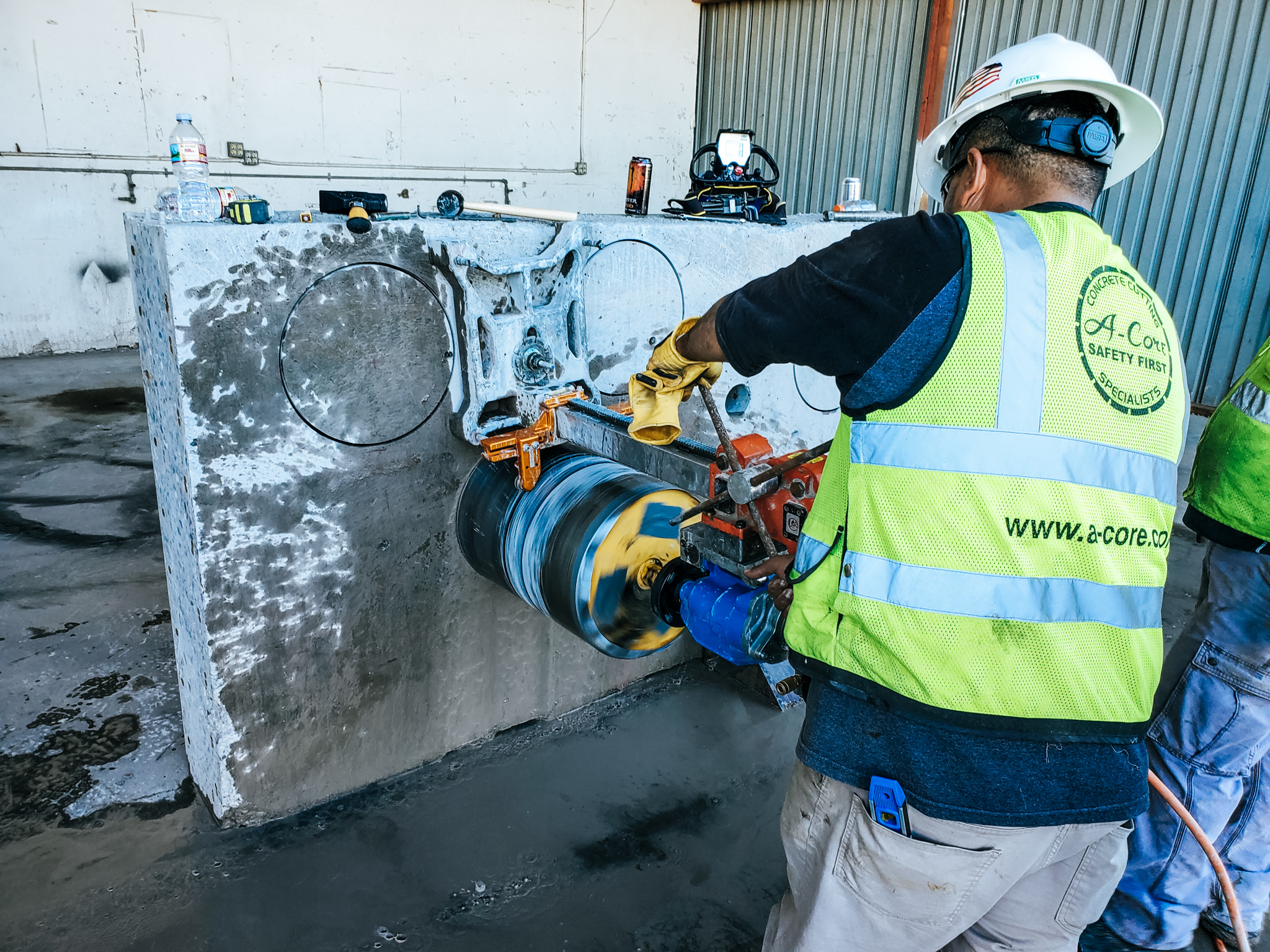Concrete Coring 101: Basics Explained

Apr/09/21
Concrete is the most popular construction material in the world—and for good reason. Not only is concrete affordable for large-scale projects and easy to work with, but its strength and durability also keep structures standing for years.
But when construction workers need to drill a hole through a concrete structure, they need heavy-duty tools to get through safely and efficiently. Core drilling creates holes in concrete walls that make it easy for pipes, utility lines, and other objects to easily pass through to the other side. In addition to construction projects, concrete coring is a common procedure in plumbing, electrical, and HVAC industries.
What Is Concrete Coring?
Concrete coring is the process of removing a cylindrical section of concrete from a wall or structure. Coring is most often performed on building walls, floors, and ceilings. There are many reasons why construction workers need to create a hole, but it’s most often to create space for water pipes, communication lines, sewer pipes, electrical wiring, and other utility lines to pass through to the other side.
Other common reasons to use concrete core drilling services include:
-
- Gathering samples of materials for analysis
- Creating recessed lighting and fixtures for home exteriors
- Creating roadway holes for rebar tie-ins and drainage
Since concrete walls are a single slab, coring needs to be done carefully and safely so the hole doesn’t compromise the wall’s structure and load-bearing ability. The actual drilling process is relatively quiet, has minimal percussion, and won’t spread too much dust into the air.
Once the hole is drilled, a solid cylindrical core—or “slug”—is removed. If done correctly, the final product will be smooth, even, and perfectly round.
Concrete Core Drilling Procedure
To drill into a concrete structure safely and quickly, construction workers use a drill rig and a core drill. The core drill is a steel tube with a hollow, cylindrical drill bit (usually made from carbide or diamond) attached to the end. Depending on the size of the hole, most situations require the drilling rig to be attached to the ground or surface with an anchor, bolt, or vacuum seal to keep the rig stabilized.
Because core drilling requires substantial speed and force to get through concrete, a lot of heat is generated during the drilling process. To reduce heat, friction, and keep the bit running smoothly on the concrete surface, water is continually fed across the hole, creating a slurry. Diamonds are the preferred bit material when working with concrete since other bit materials can quickly wear down or break after repeated contact with the hard concrete surface.
If a small hole needs to be drilled—usually less than three inches in diameter—construction workers can use a hand drill to create the hole. These smaller holes are often large enough for cables and phone lines to easily pass through. But if a hole larger than three inches is needed, a drill rig and support structure will keep the drill stable and the hole even.
Common Coring Problems
One of the most common problems that occur during core drilling is a stuck or broken bit. This usually happens when not enough water is fed across the core bit during drilling, causing a buildup of dust and debris that stops the bit from moving or completely breaks it.
Drilling bits can also get stuck from a bent or dented drill barrel. This problem often occurs from using poor drilling techniques like too much movement in the rig or pressing the bit too hard into the wall. If the concrete itself is too hard for a bit to drill through, you may need to switch out the bit for a more durable option.
A-Core’s Concrete Coring Services
Concrete coring takes a lot of experience to perform properly and safely. Don’t attempt to drill a sizeable hole in concrete by yourself—make sure you hire a construction crew or contractor so the coring is done right. A-Core is a concrete coring company that has provided core drilling services for many construction projects, including:
Airport runway lighting
-
- Nuclear decommissioning
- HVAC and piping electrical services
- Manholes
- Culverts
- Dowell drilling
- Building construction
- Architecture
Since opening in 1974, A-Core has become a trusted partner in the concrete construction and demolition industry. Our concrete coring experience has helped countless businesses complete their construction needs safely and efficiently. A-Core’s trained experts can drill concrete holes as small as 3/4 inches and as large as 73 inches—we’re also able to reach depths of 60 feet and beyond. Contact our team today to learn more about how we can help you with your concrete coring needs and to request a bid.